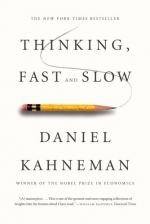|
This section contains 1,024 words (approx. 3 pages at 400 words per page) |

|
Summary
Kahneman and Tversky created an experiment to produce conclusive evidence of the role of heuristics in judgment and their disconnect from logic. Part of their experiment included the introduction of a conjunction fallacy which is committed when subjects judge the conjunction of two events to be more probable than one event. As in other studies, the substitution of plausibility for probability has negative effects on assessments when based on scenarios. Adding detail to scenarios makes them more persuasive but less likely to be truthful. The presence of bias in human judgment is always a factor.
Causes can override statistics. In the absence of the input of a narrative, the base rate is relied upon. However, if there is a narrative, the base-rate is often given no value and generally ignored. There are two types of base rates. Statistical base rates are facts about...
(read more from the Chapters 15 - 18 Summary)
|
This section contains 1,024 words (approx. 3 pages at 400 words per page) |

|




